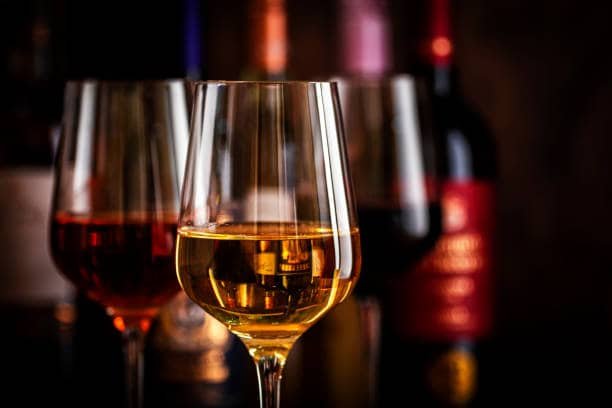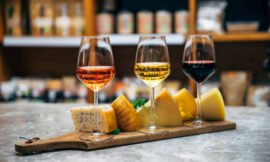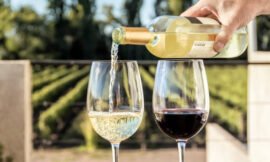Characteristics of and Advice for Barolo Red Wine.
The Nebbiolo grape is used to produce the red wine known as Barolo, which is produced in the Piedmont area of Italy. It is widely acknowledged as Italy’s finest wine, and there are only a select few bottles of wine that can come close to matching the intensity of a magnificent Barolo.
The red wines of Italy’s Barolo region are known for their complexity and tannins, as well as their ability to age for up to 20 years, making them excellent choices for financial investments.
Red Wines from Barolo and Their Distinctive Qualities
The Nebbiolo grape is famous for its strong tannins and bracing acidity that it contributes to wine. Because of this, Barolo has developed a well-deserved reputation for being a wine that must be aged for a significant amount of time before it can be consumed;
this is done in order to smooth out the wine’s harsh tannins. There is, however, nothing quite like a decent Barolo, particularly once the tannins have softened as a result of age and contemporary winemaking procedures.
Color, Alcohol Content, and Body of Barolo Wine
Nebbiolo is a thin-skinned red grape that results in a brick red, light-bodied wine. Barolo is a dry red wine created from Nebbiolo grapes. Barolo is a wine that has a relatively high alcohol content, ranging between 13 and 16% alcohol by volume (ABV).
Characteristic Scents of Barolo Wine
The delicate flowery scent of Barolo masks the robust tannins and bright acidity of this wine. When you first smell Barolo, you’ll notice notes of rose and raspberry right away.
The Flavor Profile of Barolo
Even while the flavors of rose and raspberry saturate the tongue of a fine Barolo as well, this light-bodied wine possesses robust tannins that are often only mellowed with age. In addition to it, the wine has a rather acidic taste.
The more delicate flavors of Barolo are sometimes masked by the astringency of the wine’s strong tannins while it is young and being eaten; however, as the wine ages and the tannins soften, you will be able to taste notes of raspberries, rose petals, cherries, spices, and earth on your tongue.
In order to Smooth Out Barolo’s Tannins
From the early 1900s right up until the 1980s, producing a superb Barolo was a very challenging endeavor.
As a result of the grape’s naturally occurring tannins, which are bitter and harsh, winemakers were required to age the wine in oak or chestnut barrels for a considerable amount of time—at least ten years, and sometimes even as many as 25—in order to soften the tannins.
In many cases, this resulted in the wine being oxidized and masked the grape’s natural fruit flavors. The reddish hue that develops in the wine as it oxidizes may be viewed rather well in the glass.
Wine’s Taste and Personality Have Evolved As a Result of Modern Techniques
Winemakers started altering the appearance and flavor of Barolo by using contemporary techniques in the winemaking process.
They started regulating the temperature throughout the fermentation process and reducing the amount of time the juice spent in contact with the skins in order to bring the tannin content down.
They also started utilizing smaller barrels made of French oak and began bottling the wine sooner in order to maintain the wine’s fruitiness rather than allowing it to go away throughout the aging process.
The Barolo of the Present
The end result is a Barolo that has a luscious and sumptuous personality, with tannins that, if not completely controlled, are at least slightly subdued.
In today’s world, the legal minimum age for a Barolo is three years, while a Riserva must be matured for five years. In spite of this, Barolo is at its peak when consumed at least five years after the vintage date it was produced.
The region that produces Barolo wine
The Italian wine known as Barolo comes from the Piemonte (Piedmont) area, which literally translates to “country at the foot of the mountains.”
These mountain ranges are known as the Alps, and they border this wine area on three of its sides. Langhe is the name of the area in Italy’s Piedmont region where Barolo is produced.
It is an area of hillside vineyards that are steep and undulating, and they are interspersed with little settlements here and there.
The production of Barolo is focused primarily on five different villages: Barolo, La Morra, Castiglione Falletto, Serraluna d’Alba, and Monforte d’Alba.
The Denominazione di Origine Controllata e Garantita (abbreviated as DOCG) is Italy’s highest certification for wines, signifying that they are made in accordance with stringent regulations governing both the growing and production processes. Barolo is given this designation.
The Barolo designated wine appellation is considered to be among the most prestigious in all of Italy while being one of the smallest. It is a harsh and unforgiving country that receives more than its share of cold weather and presents difficulties for grape farmers and winemakers.
Barolo’s Nebbiolo Grape
Nebbiolo is the only kind of grape that is used in Barolo wine. It is a kind of red grape that most likely got its name from nebbia, a weather condition that is typical in Piedmont. The month of October is known for its thick sheets of fog that cover the whole region.
The most important thing to understand about Nebbiolo is that it is a rough-and-tumble grape that is full of layered flavors, but it is also laden with heavy-duty harsh tannins. Nebbiolo is a grape that ripens very slowly, so if it rains or becomes cold too soon during the growing season, the Barolo grape won’t have the opportunity to realize its full potential.
The placement of the vineyard becomes very important and may make all the difference in the world between a great vintage and a just satisfactory one.
As a consequence of this, you could encounter the phrases “bronco,” which means hilltop, “sori,” which refers to a hilltop with southern exposure, and “costa,” which suggests a hillside with the sun, on the labels of Barolo wines.
The more sun exposure a vineyard has, the better, and the finest vineyards are located on the sunniest, warmest pieces of ground.
Principal Barolo Wineries
In most cases, Barolo is created as a wine that is bottled on the estate where it was grown and comes from a single vineyard.
The vast majority are tinier wineries owned by single families, although there are also negociants who produce Barolo by blending grapes from a variety of vineyards located throughout the area. The following is a brief list of some of the most acclaimed Barolo winemakers.
Cantina Bartolo Mascarello
Cantina Bartolo Mascarello is consistently ranked as one of the highest among Piedmont’s most acclaimed Barolo wineries. Even though Mascarello passed away in 2005, the legacy of his legendary Barolo wines lives on, and his daughter, Maria Teresa Mascarello, continues the family’s commitment to viticulture and viniculture excellence.
In point of fact, the Mascarello family has been making Barolo wines for more than a century, passing on the family legacy of winemaking from one generation to the next. Forbes and Decanter both rank Mascarello at the very top of their respective lists of the best Barolo producers in Italy.
Paolo Scavino
Enrico Scavino is the fourth generation of his family to oversee the winery that bears the name Paolo Scavino, which was established in 1921. Wine experts such as Wine Enthusiast and Wine Spectator frequently award the wines scores of 90 points or higher for their quality.
Poderi Aldo Conterno and Giacomo Conterno
In 1920, the Conterno family bottled their very first reserve Barolo, and ever since then, the family has been producing high-quality wines.
Giacomo Conterno took over the family company, and in 1969, his son, Aldo, established his own winery called Poderi Aldo Conterno, which was built on the robust family history of winemaking.
Giacomo Conterno’s best Barolo wines often get scores of more than 90 from major wine raters, and Aldo’s wines usually receive scores of more than 90 as well, following in his father’s footsteps as a winemaker with consistently excellent products.
In point of fact, when taken together, these two wines are considered to be among the greatest Barolos in the whole world.
Pio Cesare
Pio Cesare is a fifth-generation winemaker who has been making high-quality wines for more than 125 years. He is most well-known for his robust Barolo and Barbaresco wines. Pio Cesare’s potent Barolo wines get high marks year after year in wine competitions and are consistently rated among the best in the world.
Drinking Barolo
Avoid drinking Barolo too young at any cost. If you drink the Barolo too soon after it has been opened, the wine’s rich tastes may not reveal themselves, leaving you to wonder what the big deal is about Barolo. Barolo is a wine that is notoriously difficult to produce well and is notoriously costly.
Because of the small production volume and extensive age that is necessary to create Barolo wine, the price of a bottle will likely begin in the middle of the $40 range for the bottom level and continue to climb like an elevator from there.
How to Pair Barolo with Different Foods
The cuisine of the Piedmont region, which is known for being substantial, rich, and a joy for carnivores, is the perfect complement to Barolo. You may look forward to feasts consisting of roasted game, veal, hog, and lamb dishes, in addition to sausages, meat-based risottos and pastas, and polenta served with everything.
If you include a full-bodied Barolo in the recipe, the cold and cloudy evening will evaporate completely. Oh, but there’s one more thing. In addition, white truffles, which are considered to be the oyster of the land, are native to Piedmont.
Embrace your inner hedonist by shaving some earthy white truffle over your tagliatelle, pouring a glass of Barolo, and grinning as you think about your life of La Dolce Vita.
Alternate Names for Barolo Wines
There aren’t very many wines that can compare to a Barolo. Because it requires very specific growth conditions, Nebbiolo is a grape that is notoriously difficult to cultivate successfully.
Barbaresco, which is also from Piedmont, and wines classified as the varietal Nebbiolo are both examples of wines that are made from the Nebbiolo grape but originate from locations other than Barolo and cost somewhat less than Barolo.
There are other nations that produce Nebbiolo wines that are worthy of consideration, such as Australia, the state of California, and Washington state in the United States.
The wine that is both the King of Wines and the Wine of Kings
Because of their consistently excellent quality, investment and age potential, and rich, powerful flavors that are said to mirror the location from where the wines originate, Barolo wines have earned the nicknames “King of Wines” and “Wine of Kings.”
Even though Barolo isn’t the easiest wine to drink, every wine fan should give it a go at least once so they may have a better appreciation for how really amazing wine can be.
8 Amazing Wine Health Benefits
Can Cabernet Sauvignon Be Refrigerated?
Introduction To Bourbon-Aged Wine
30 Interesting Wine Facts For Future Connoisseurs
How To Enjoy And Appreciate White Wine






